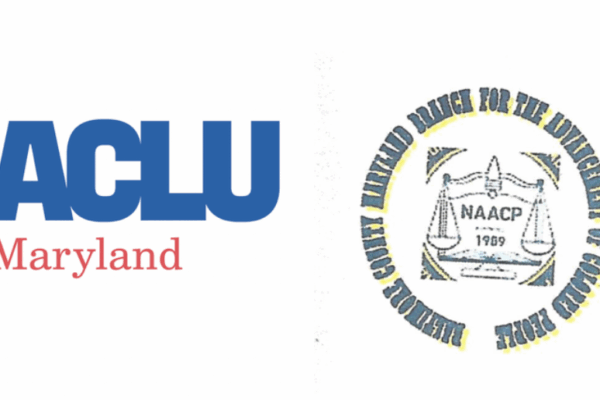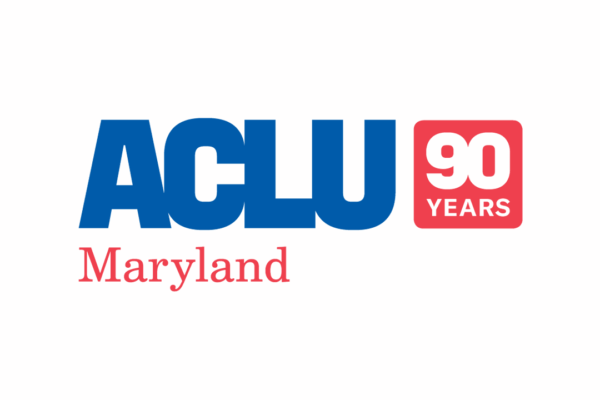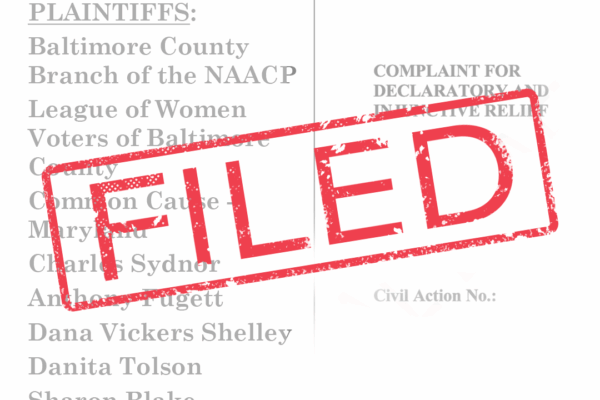BALTIMORE, MD – In materials submitted yesterday to the Baltimore County Redistricting Commission, the Baltimore County NAACP and the ACLU of Maryland are expressing concerns that the redistricting plan the Commission is on the brink of recommending would unlawfully dilute Black people’s votes, in violation of the landmark Voting Rights Act. Racial fairness commands of the Act require election districts to be configured so that voters within a cohesive racial minority have a real opportunity to elect officials of their choice, just as do those in the white majority.
Said Dr. Danita Tolson, president of the Baltimore County Branch of the NAACP: “We cannot seek redistricting for the benefit of some and forget about how it may affect others. In 2001, we fought this battle; we had to stand to get someone elected and now we are back in the same situation with history repeating itself. We do not have a history of electing a minority candidate in a majority white district. Therefore, we want to have equal representation in the county resulting in diversity. We feel that the demographics show that there should be two majority minority districts. Equal minority representation in each district is needed for distributive and social justice.”
The civil rights groups are working with an experienced demographer to analyze census data for Baltimore County, and to propose an alternative redistricting plan that meets Voting Rights Act requirements by expanding election opportunities for Black, Indigenous, and People of Color voters relative to their increasing share of the population. The expert analysis shows that over the last two decades, racial diversity within Baltimore County’s population has increased substantially, with Black, Latinx, and Asian populations each growing significantly. Now, BIPOC residents make up 47 percent of the County’s population. That is up from 25 percent BIPOC population in 2000 and from 35 percent in 2010.
The letter accompanying the NAACP-ACLU proposal states:
“[T]hese demographic changes also bring with them corresponding responsibilities under the federal Voting Rights Act, in order to ensure that the County’s redistricting process and election system are racially fair, affording all voters – old and new, Black, Brown and white – realistic opportunities to fully participate in the electoral process and to elect candidates of their choice. To achieve racial fairness and comply with the Voting Rights Act the redistricting plan proposed for the County should – to the greatest extent possible – be one that reflects the overall diversity of the County, and that gives residents opportunities to elect their chosen candidates roughly proportionate to their numbers in the population.”
Instead of meeting this goal, the Commission’s proposed plan would maintain a white majority in six of seven Council districts by “packing” a supermajority of Black voters into its single majority Black district, a tactic the U.S. Supreme Court has counseled against. In contrast, the NAACP-ACLU alternative proposal would create two majority Black districts among the seven, plus a third “swing” or “influence” district that would include about even numbers of white and BIPOC voters.
Deborah Jeon, legal director of ACLU of Maryland and an author of the NAACP/ACLU proposal, said: “It’s alarming that the Commission charged with leading the County’s redistricting efforts has spent months working on this plan and still at the eleventh hour seems oblivious to the Voting Rights Act and its racial justice requirements. We think racial fairness should be the Commission’s top priority, not some forgettable afterthought.”
Quoting disturbing Commissioner comments from an August public meeting, the NAACP-ACLU letter further notes:
Instead of discussing the obvious benefits gained through racial diversification of the County’s population and government and how to capitalize on these gains through redistricting, Commission members have focused questions on why the County’s white population is dropping in proportion to its Black population, where white people might be going, and where new Black residents are coming from.
Said Clifford Collins, Political Action chair of the Baltimore County NAACP: “One major objective of the NAACP Baltimore County Branch is to promote active civic engagement and voter participation of African Americans and other minorities in Baltimore County. The demographics revealed by the 2020 U.S. Census confirm that African Americans and other minorities have the potential to increase their representation on the Baltimore County Council. To that end, the Baltimore County NAACP and the ACLU of Maryland created a second majority-minority councilmanic district. The creation of this district will help to ensure a candidate of residents’ choosing will be elected to serve on the Baltimore County Council.”
Until 2001, only white candidates were elected from every County Councilmanic district, all of which were configured to encompass majority white populations. In 2001, civil rights activists, including the Baltimore County NAACP and ACLU of Maryland, urged the County to adopt a plan that would comply with the Voting Rights Act and that would ensure that Black residents could vote for a candidate of their choice to represent their community. The resulting plan included one district that had a majority Black population and in the 2002 election, voters in the district made history by electing the first-ever Black representative to the Baltimore County Council. Consistently since then, residents of the majority-Black district have elected Black representatives, while the remaining majority-white districts have all elected only white officials. The groups assert that this pattern shows “the persistence of racially polarized voting and the importance of districting in addressing resulting minority vote dilution.”
Read the Baltimore County NAACP and ACLU of Maryland’s letter about what our plan is for redistricting here.
Related Content
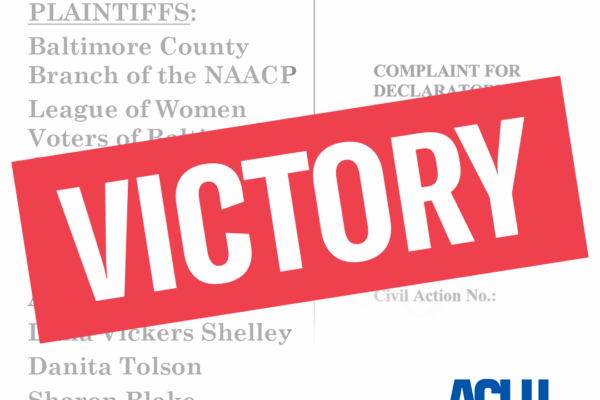
VICTORY: Federal Judge Orders Baltimore County to Submit Redistricting Plan that Complies with Voting Rights Act
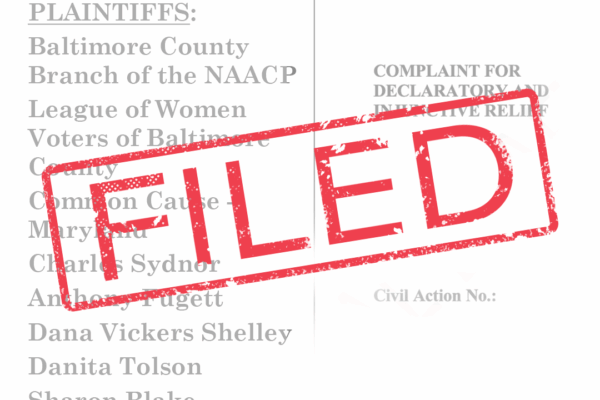
Black Voters, Baltimore County NAACP, League of Women Voters, and Common Cause Sue to Defend Voting Rights in Redistricting
Stay Informed
Sign up to be the first to hear about how to take action.
By completing this form, I agree to receive occasional emails per the terms of the ACLU’s privacy statement.
By completing this form, I agree to receive occasional emails per the terms of the ACLU’s privacy statement.

